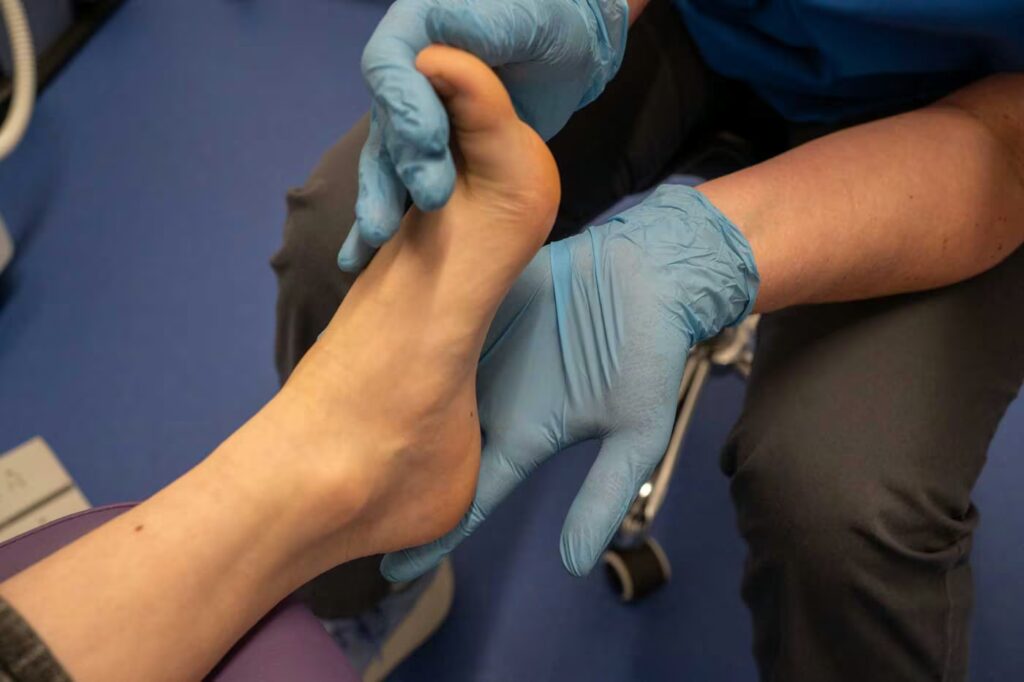
Specialist Services
Lacuna Fungal Nail Treatment
Tried all the over the counter fungal nail treatments? Not working?
Discoloured and thickened nails are often misdiagnosed as fungal. At Feet & Motion the first thing we will do is confirm that it is definitely a fungal infection so we can advise you on the most appropriate treatment.
Symptoms of a fungal nail infection include:
- Nail thickening
- Nail discolouration - usually either white/yellow/brown
- Brittle nail texture
- Build-up of debris under the nail
- Lifting of the nail
What type of appointment should I book?
If you’re interested in Lacuna fungal nail treatment, then please book a New Patient appointment where we can assess your suitability. Our New Patient form will be sent to you, and you can add a note for us if you’re having any particular problems. If you’re still unsure about which appointment type is right for your needs, then please do give us a call, or drop us an email.

Treatments
Topical
We offer a number of different topical treatment options, including Verrutop. Topical anti-fungal treatments are applied every two-weeks and usually for at least four treatment sessions – some people respond after just one treatment session.
Lacuna Method
The Lacuna method is a fungal nail treatment where we drill very small ‘micro’ holes through the nail plate to allow the penetration of an antifungal solution through to the site of the infection at the nail bed.
How does the Lacuna Method work?
Often the active part of the fungal nail infection is under the nail plate on the nail bed (the skin beneath the nail) and not just the nail itself. This makes it difficult to treat the infection with over-the-counter lacquers as the nail plate acts as a barrier.
By drilling micro holes through the nail plate it allows the antifungal solution to penetrate through the nail and reach the nail bed. This treats the active site of the fungal infection at the nail bed and over time the damaged discoloured nail grows out. As with any antifungal treatment, this takes typically 6 -18 months, depending on how fast your nails grow.
Nail Removal
For an extensive deep infection one option is to remove the entire nail under local anaesthetic and treat the nail bed with an antifungal as the nail regrows.
Evidence Base
The NICE (National Institute for Health and Care Excellence) guidelines recommend clear, evidence-based options for managing fungal nail infections, including topical and oral treatments. In practice, this means you can finally tackle stubborn fungal nails with confidence in the outcome.
Research supports nail fenestration (the principle behind the Lacuna Method) as a safe and effective way to treat fungal nail infections. By creating tiny micro-holes in the nail, antifungal medication can reach the infection directly — helping you get better results, faster.
Read the study here
